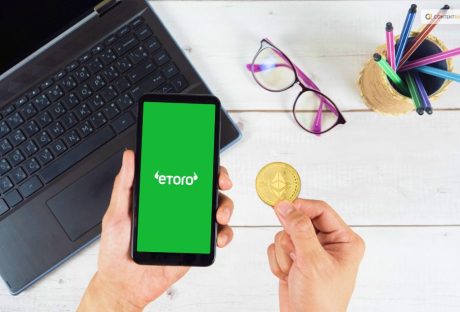Category: Business
ContentRally is a leading source of reliable news and trending topics on Business. Get hard-to-find insights and advice on Business from industry-specific leaders.

How Quality Plant Control Instruments Boost Efficiency
Plant control instruments play an extremely important function in the constantly shifting environment of industrial operations. These devices monitor and control a variety of processes within the plant, which has a substantial impact on overall productivity. This article digs into the quality plant control instruments available to study how they can work as catalysts for higher output. Navigating the Industrial Landscape Precision and control are of the utmost importance in the complicated ecology of the industrial sector. Instruments used for plant control are essential in preserving the delicate balance that must be kept for activities to go without interruption. These devices are the unsung heroes behind the scenes, and their responsibilities range from temperature regulation to pressure management. Sensors Sensors are the "eyes and ears" of every control system, serving in this capacity as the system's "central nervous system." These devices monitor the environment for any shifts in conditions and relay that information to the control system in real-time. Temperature sensors, for instance, can be installed in a factory to ensure the working environment is conducive to efficient output. This process minimizes damage to the equipment and guarantees that the end product will be of high quality. Actuators and Control Valves Actuators and control valves are the components that step into the spotlight when implementing changes based on sensor data. The actuators translate the signals from the control system into action. Imagine a situation where exact fluid flow management is necessary; in this case, the control valves would take center stage. These instruments accurately control the flow, minimizing waste and making the most available resources. PLCs and SCADA Systems The efficiency of industrial processes is not solely dependent on the performance of its separate parts; rather, it is contingent on how well those parts are orchestrated. Conductors of this symphony are served by Supervisory Control and Data Acquisition (SCADA) systems and Programmable Logic Controllers (PLCs). While programmable logic controllers (PLCs) ensure that the various parts collaborate well, supervisory control and data acquisition (SCADA) systems offer an overview of the entire process. Together, they make it possible to make decisions and troubleshoot issues quickly, which helps to reduce downtime. Human-machine interface (HMI) In today's increasingly automated world, human-machine interfaces, or HMIs, make it easier for humans and machines to communicate and collaborate. These interfaces offer operators a straightforward method for monitoring and controlling the user-friendly system. HMIs enable operators to make quick, educated decisions because of their user-friendly displays and controls, which contribute to the system's overall efficiency. Improving Efficiency Using Plant Control Instruments Instrumentation and control systems have the potential to become the "brains" of your company when they are properly programmed. This study area is changing due to the introduction of new, more affordable technology. If implemented as planned, these adjustments may result in considerable benefits, such as greater productivity and decreased expenditure. Collaborating to Calibrate Success Cooperation between individuals is essential to developing efficient instrumentation and control systems that can produce comparable cost reductions. Engineers, technicians, and programmers must work together from concept design to 100% completion and startup to produce high-quality outcomes. This process is especially true on design-build projects. Project teams want to begin functioning as a single integrated entity as soon as practicable. If they understand the costs and benefits of each option, the team can construct the right instrumentation and control architecture for the task and intelligently build to meet specifications. Instrumentation and control engineers can also respond swiftly to design and scope changes as they occur and alter systems accordingly, thanks to continuous interface and communication. This results in improved ease of operability and reduced the number of wasted resource hours. Making Real-Time Improvements In recent years, advancements in software and hardware for instrumentation and control have made them more dependable, adaptable, and user-friendly. As a result, the connectivity between process equipment and instrumentation has also improved. These technological improvements enable to supply operators of facilities with the appropriate information at the appropriate time. Operators are provided real-time control over several aspects of their manufacturing process, such as the workers, machinery, and support services. Monitoring and Regulation In a plant, it is the job of the instrumentation and control systems to monitor and maintain various characteristics such as temperature, pressure, flow, level, and quality. These systems deliver real-time data on the conditions of the process, allowing operators to make educated decisions and take preventative measures to keep operating conditions at their optimal level. The evolution of instrumentation and control software and hardware over the past years has made it more flexible, dependable, and user-friendly. As a result, communication between the process equipment and the instrumentation that controls it has improved. Because of this, operators can exercise control in real time on production-related components such as equipment, support services, and other associated components. Redundancy and Fail-Safe Mechanisms Reliability is something that cannot be compromised in the field of plant control instruments. Redundant and fail-safe mechanisms serve as safety nets, ensuring business operations continue without interruption, even in the face of unforeseen occurrences. This process is of the utmost importance in fields such as manufacturing, where even a short downtime can result in large monetary losses. Taking Control of Costs For facilities that are managed by instrumentation and control, technological advancements have led to a range of cost-related benefits, including the following: Enhanced operational efficacy that lowers the risk of making financially detrimental errors. Because of increased automation, fewer people will be needed to run operations. Potentially higher product output as a result of improved automation A faster response time for addressing issues and warnings Virtualization, which lowers the necessary amount of hardware while also increasing both dependability and flexibility Guarantee of an excellent level of performance from both the controls and the end product Elevate Operations Through Quality Instruments It is impossible to overestimate how much influence high-quality plant control devices have on efficiency. To maintain a competitive edge in the current business environment, investing in control instruments at the cutting edge of technology is not merely a recommendation but an absolute requirement. You can check out https://www.pcipro.net/ to guarantee the quality of the instrumentation and controls you will use for your business. Adopting these technological advances will unquestionably determine the performance of industries, opening the way for a brand-new era of highly efficient and productive operations. Read Also: Balancing Health And Ecology With Native Plants Unlocking Plant-Based Protein Potential: Exploring A Leading Supplement Enhancing Spaces With Greenery: The Art Of Plant Styling In Interior Design
READ MOREDetails
Snowbird Season: Car Shipping For Sun Seekers
As the temperatures drop and winter's chill sets in, many Canadians long for a reprieve from the cold. This is where the concept of being a "snowbird" comes into play. Snowbirds are individuals, often retirees, who migrate south to warmer climates during the winter months, seeking refuge from the icy embrace of Canadian winters. Florida, with its pleasant climate and abundance of sunshine, is a prime destination for these sun seekers. For snowbirds, having their own vehicle at their disposal in the Sunshine State is a must, and that's where car shipping services come into play. The Snowbird Lifestyle: Escaping Canadian Winters The snowbird lifestyle has been a longstanding tradition for Canadians looking to escape the harsh winter weather. These individuals typically travel to destinations in the southern United States, with Florida being a particularly popular choice. The allure of Florida lies in its mild winters, stunning beaches, and an array of recreational activities. Snowbirds can enjoy golfing, swimming, and an active outdoor lifestyle during the months they spend in Florida. Why Shipping a Car is Essential for Snowbirds While Florida offers plenty of attractions, having a personal vehicle is often essential for snowbirds to fully enjoy their time in the state. A personal vehicle provides the flexibility to explore the area, visit various attractions, and enjoy the convenience of their own transportation. Here are some reasons why shipping a car from Canada to US is crucial for snowbirds: 1. Comfort and Convenience Snowbirds can enjoy the comfort of their own vehicle, knowing that they have a reliable means of transportation that suits their preferences. 2. Familiarity Having their own vehicle provides a sense of familiarity and reduces the stress of adapting to public transportation or unfamiliar rental cars. Cost Savings Shipping a car is often more cost-effective than renting a vehicle for an extended period, especially for the duration of a snowbird's stay in Florida. 4. Mobility Snowbirds can easily explore Florida's various attractions, including national parks, beaches, and cultural sites, with the freedom of their own vehicle. Car Shipping for Snowbirds: How It Works Shipping a car from Canada to Florida or other snowbird destinations in the United States is a straightforward process. Here's how it typically works: 1. Choose a Reliable Car Shipping Company Select a reputable car shipping company with experience in transporting vehicles across the border. Look for companies that specialize in snowbird car shipping and have a strong track record. 2. Request a Quote Contact the chosen car shipping company to request a quote for transporting your vehicle. The quote will be based on factors like the distance, type of vehicle, chosen shipping method (open or enclosed transport), and the time of year. 3. Prepare Your Vehicle Before shipping your car, you'll need to prepare it for transit. This involves removing personal items, ensuring the vehicle is clean, and having no more than a quarter tank of gas. 4. Shipping and Delivery Once the vehicle is loaded onto the car carrier, it will be transported to your destination in Florida. The car shipping company will provide an estimated arrival date. 5. Enjoy the Sunshine With your vehicle safely delivered, you can enjoy your stay in Florida to the fullest. Explore the state, soak up the sun, and make the most of your snowbird season. Related: 4 Common Mistakes To Avoid When Shipping Your Car Choosing the Right Car Shipping Company Selecting the right car shipping company is paramount for a smooth snowbird season. Consider the following factors when choosing a service provider: 1. Experience Look for companies with experience in shipping cars from Canada to the United States, especially for snowbird destinations. 2. Reputation Research and read reviews to ensure the company has a good reputation and offers reliable services. 3. Licensing and Insurance Verify that the company is licensed and insured, providing you with peace of mind in the event of any unforeseen incidents. Conclusion For Canadian snowbirds, escaping the winter by heading to Florida is a cherished tradition. Having your own vehicle during your stay enhances the experience, providing convenience and freedom to explore all that the Sunshine State has to offer. Car shipping services play a crucial role in ensuring that snowbirds can make the most of their time in Florida, delivering their vehicles safely to their winter retreats. So, if you're a sun seeker planning your next snowbird season, consider the convenience and benefits of shipping your car to Florida and savor the warmth and sunshine that awaits. Read Also: AutoTempest: Is It The Best Search Engine For Cars? Why Use Car Shipping Services & How A Cost Calculator Can Help Ship From Toronto Your Ultimate Guide To Efficient Shipping Solutions
READ MOREDetails
Your Toronto Real Estate Guide: Trends, Hot Spots And Key Players
Toronto is hot right now. It’s the fourth-largest in North America, trailing only Mexico City, New York and LA, and finally getting the recognition it deserves. It has been name-checked in hit songs (thank you, Drake), won recent pro sports titles (thank you, Raptors), and was dubbed by the New York Times as the “Quietly booming tech town” to rival Silicon Valley. It’s no wonder people are moving to Toronto in droves. In this article, let’s equip you with a few basic details about buying a home in the Six. Key Players If you aren't Toronto-born-and-bred, you may feel at a disadvantage breaking into the challenging real estate market. But shake that feeling aside. While you might feel bombarded with choices for representation, a little research will clear the air. You can check out what's widely regarded as the best real estate company in Toronto at the link provided. Toronto Real Estate: An Overview The first thing to know about Toronto real estate is that, compared to other North American markets, it’s relatively expensive. According to Oxford Economics, the city joins other buzzing markets like Vancouver, LA and NYC as one of the priciest places for housing on the continent. But the trade-off is worth it: Torontonians enjoy low crime rates, clean civic spaces, abundant amenities and a world-class transit system. As you dip your toes into Toronto home hunting, keep a close eye on market fluctuations. After a series of Bank of Canada rate hikes, demand showed signs of slowing early this year. However, by April, local news reported a rebound with a 44% rise in the volume of sales month over month. It’s impossible to tell where the market goes from here (likely up), so work with an experienced real estate company to determine the ideal time to strike. A Lay Of The Land: Hot Spots And Up-And-Coming Neighbourhoods Toronto is a city of neighbourhoods, each with its own flavour, cultural/historical significance and demographic makeup. Hot spots in the western part of the city, like Queen West, Ossington and Parkdale, skew younger – with young professionals rubbing elbows at swanky bars and hip eateries. Meanwhile, hot spots to the east like Leslieville, Beaches and Danforth Village sport more of a family feel –with sprawling parks, good schools and all-ages venues. Dotted throughout downtown Toronto, you’ll also find cultural neighbourhoods and ethnic enclaves: Chinatown, Little Italy, Koreatown, Little Portugal and Little India, among others. If you head a little outside of the dense central areas, you can find up-and-coming neighbourhoods. These include Scarborough Village, Bloordale Village and the Junction Triangle. However, a word of caution: For up-to-date information on smart real estate opportunities, don’t rely on an internet article as trends are liable to change; instead, ask knowledgeable professionals about their choices for the best up-and-coming areas to buy. Toronto is booming – and, by all indications, it will continue to boom in the coming decades. To strike while the iron's hot, connect with expert real estate agents and buy your slice of the big city. Read Also: The 7 Most Common Email Marketing Mistakes Identify Malicious Emailers With Online Tools Types Of Objections In Sales And How To Overcome Them With An Email Delivery Test?
READ MOREDetails
Financial Planning For Contractors: Ensuring Project Viability
Financial planning is an essential aspect of any business, and for contractors, it's no different. In the construction industry, project viability relies heavily on careful financial management. This article will explore the principles of effective financial planning for contractors and how using a bid bond can demonstrate financial stability and attract clients. The Importance Of Financial Planning For Construction Companies The construction industry is highly competitive, and its dynamics and the economic scenario are changing continuously. Therefore, it is important to have a plan in place when it comes to navigating regulations, compliances, and even finances. This section mainly discusses the importance of financial planning for the construction companies. 1. Navigating The Landscape Of The Construction Industry As mentioned above, the construction industry is rapidly changing. Every now and then, you have new rules, guidelines, compliances, and changes in technology. It is an important aspect of the entire industry. A personalized plan can help you pinpoint these changes and be prepared to face the challenges in the future. 2. Managing The Flow Of Cash Cash flow management is another critical aspect of any business. The construction business is no exception. The irregular scheme of payments and also the out-of-plan expenditure can, indeed, disrupt the flow of cash. A personalized flow of finance in the construction industry can help you maintain quite a healthy cash flow. It helps manage the sudden need for finance and fix issues. 3. Long-Term Sustainability A well-planned financial plan offers a roadmap for the long-term sustainability of the construction companies. They assist companies in setting attainable goals and targets. If you do not have a solid base of finances, you won’t be able to plan ahead in the future. One of the biggest challenges that business organizations face today is the long-term sustainability. As a business, you could only attain it if you have a steady supply of finances. 4. Managing The Risks The construction industry is quite risky. There are financial liabilities, safety, legal and other issues. A personalized financial plan helps create the strategies. They help reduce the chances of financial setbacks and also the circumstances hitherto not experienced. 5. Reducing The Cost Of Borrowing You all know that the construction industry is quite fund-intensive. You need to have a large sum of money. Under the circumstances, borrowing is the biggest way to handle it. But they have their interest associated with it, which is quite hefty at times. They may affect your budget and the prices of the products. Therefore, you must have the planning and a strong pedestal in place. But there is no alternative to a strong planning. 6. Increased Profitability The be-all and end-all of business is earning profits. Managing the expenditure is quite a challenge; therefore, you must be highly prepared with a plan in mind. A well-crafted plan of finances considers the revenue streams of the company assets and the expenses. A business owner uses their plan to make the wisest of choices. They help boost the profits and then cut the costs. 7. Attracting The Investors When you woo the investors for your projects, they look at some of the important things before investing. One of the core elements in good financial planning. If they understand that your finances are well managed and your organization is well in shape, it can drive them to invest in your vision. Therefore, you must invest in professionally prepared finance to ensure steady growth and stability in the long run. The Core Aspects Of Financial Planning For The Contractors In this section, we discuss some of the core aspects of financial planning that can help you stay ahead in this competitive landscape. As a stakeholder in the construction sector, you must have the planning in place. Budgeting The cornerstone of any financial plan is a well-structured budget. It’s essential to account for all expenses, including materials, labor, equipment, and overhead costs. By creating a detailed budget, you’ll be better equipped to estimate project costs accurately. Cash Flow Management Cash flow is the lifeblood of your contracting business. Timely invoicing and efficient collection of payments are critical. Moreover, having a cash reserve for unexpected expenses or delays is a wise strategy. Using Bid Bonds To Show Financial Stability One effective way to demonstrate financial stability to potential clients is by using bid bonds. A bid bond is a form of guarantee that you, as a contractor, provide to the project owner. It is a promise that if you're awarded the project, you will enter into a contract and provide performance and payment bonds as required. It assures project owners that you have the financial capacity to complete the project. By including these bonds in your bids, you signal to clients that you are financially stable and capable of fulfilling the contract. This can set you apart from competitors and instill confidence in project owners. Financial Planning For Contractors Emergency Fund As mentioned earlier, cash flow can be unpredictable. Having an emergency fund that covers at least three to six months' worth of expenses can provide a safety net during lean times or unexpected setbacks. Diversify Your Client Base Relying on a single client or type of project can be risky. Diversifying your client base and the types of projects you take on can help stabilize your income and reduce vulnerability to market fluctuations. Regularly Review And Adjust Your Financial Plan Financial planning is not a one-and-done task. It's essential to review and adjust your plan regularly, especially as your business grows and evolves. Insurance Coverage Consider various insurance options to protect your business against unforeseen events. Liability insurance, workers' compensation, and equipment insurance are just a few examples of coverage that can safeguard your financial stability. Invest Wisely Make informed investment choices for any surplus funds you may have. Consult with a financial advisor to develop an investment strategy that aligns with your long-term financial goals. Conclusion In conclusion, financial planning is a critical component of a contractor's success. It ensures project viability, stability, and, ultimately, the growth of your business. Remember to create a comprehensive budget, manage your cash flow efficiently, and explore various financial strategies to secure your financial future as a contractor. By following these principles, you can build a strong foundation for your contracting business and thrive in the competitive construction industry. Read Also: Construction Safety – What You Didn’t Know! All You Must Know About Construction Business Management Software Construction Safeguards: What Are The Top 3 Leading Risks For Machine-Related Amputation?
READ MOREDetails
Investing In The Future: Buying Ethereum Made Simple On eToro
Ethereum recently switched from a Proof-of-Work consensus mechanism to a Proof-of-Stake one in an effort to increase network efficiency. It's frequently regarded as a solid cryptocurrency investment with future growth potential. We will guide you through the eToro Ethereum purchase process in this section. Want to know how to buy Ethereum on eToro? eToro is an exchange platform that streamlines the registration and asset purchase process into a few easy steps. You can easily purchase Ethereum on eToro rather than becoming bogged down on a confusing platform. Where To Buy Ethereum? Given that Ethereum is the second-largest digital asset by market capitalization, the top cryptocurrency exchanges support it. You must use caution, though, as the majority of cryptocurrency transactions are unregulated. Additionally, you must take into account storage costs, minimum account balances, investment fees, liquidity, and other crucial elements. The five Ethereum investment sites listed below are worthwhile to take into account when looking for places to invest. Buy Ethereum On Etoro If you're a total novice to cryptocurrency, Ethereum eToro is a good place to invest. In 2007, the user-friendly investing platform eToro was established. Novice investors use it because they want an easy-to-use, secure cryptocurrency-buying platform. eToro is a highly regulated platform that possesses four tier-1 licenses. Regulation from the FCA (UK), FINRA (US), ASIC (Australia), and CySEC (EU) is included in this. These respectable licensing authorities guarantee that eToro maintains customer funds in different bank accounts. In order to ensure that it conforms with anti-money laundering laws, eToro will confirm the identity of each and every registered user. On eToro, you must first register and create an account in order to purchase Ethereum. For its users, eToro streamlines and expedites the registration and account creation process. To create an account, you must first visit the official eToro website and click the "Join Now" button. You must input some personal information, such as your name, email address, and a strong password. Confirm and create the account after you make sure all of your information is accurate. You can now access your eToro account with the same username and password that you used to register. You must now use text messaging or email address verification to validate your account. It's crucial to confirm your identity with your identity card and address documentation, such as utility and bank statements. It is mandatory to verify your identity in order to adhere to KYC and AML regulations. Furthermore, on eToro, you are unable to trade assets without first confirming your identity. The next step requires you to make a deposit into your eToro account. There are several different payment options available on the eToro platform. They consist of card payments, internet payments, and bank transfers. How To Buy Ethereum On Etoro: eToro From The Inside? After choosing the "Deposit funds" option, you must choose the payment method you want to use to send money. The deposit amount and other payment information, such as your name and bank account number, must then be entered. To add money to your account, fill out all the information and validate the transaction. The "Watchlist" area of your eToro account dashboard is where you should next go. Use the search bar to look up Ethereum in that. Being one of the most well-known and the second-largest cryptocurrencies in terms of market capitalization, it is simple to locate. You now see a different page when you choose Ethereum. It displays all of the data about Ethereum, including historical information, market performance, and other data. To purchase Ethereum on eToro, click the "Buy" option and fill out the information. You must enter purchase information, such as the amount of money you want to spend on Ethereum, in the following step. Alternatively, you can decide how many Ether coins you want to purchase. Once these details are entered, select "Open trade" to proceed with Ethereum purchases. Make sure all the information is accurate and that you have authenticated your identity on the platform before proceeding. Ethereum is deposited into your account once you confirm the trade to purchase it on eToro. To view the Ethereum you have purchased on the platform, navigate to the "portfolio" area. Can You Lose Money When Investing? Sure. It is possible to lose more money than you initially invested, to lose money on a trade, or to use all of your capital to open positions and pay overnight fees. Negative Balance Protection comes gratis with the platform, nevertheless. This will just reset your equity to zero and absorb all of the losses that have been incurred automatically. This basically means that even though you might lose more than the amount you invested, you won't lose more than your capital or the total amount deposited into your account because of eToro's Negative Balance Protection policy. Ethereum is going through a lot of changes to increase the network's effectiveness and performance. One of the events that changed the network from PoW to PoS was the recent Merge. It seeks to reduce transaction fees and improve user experience as a result. Purchasing Ethereum is a smart way to capitalize on the network's expansion and future possibilities. You can increase your chances of making money during the next bull market by purchasing Ethereum on eToro! ETH Cross Pairs Now that you know how to buy Ethereum on eToro, if you wish to investigate investing in ETH-related cross-instruments can also access eToro.The availability and diversity of the currency and cryptocurrency cross that the platform offers are subject to change in response to market demands. There are no commodity crosses available for ETH. Currency CrossesCrypto CrossesAustralian Dollar (ETHAUD)Bitcoin (ETHBTC)Canadian Dollar (ETHCAD)EOS (ETHEOS)Swiss Franc (ETHCHF)Gram Coin (ETHGRAM)Euro (ETHEUR)Stellar Lumens (ETHXLM)British Pound (ETHGBP)Zcash (ZECETH)Japanese Yen (ETHJPY) New Zealand Dollar (ETHNZD) If your account is under the jurisdiction of a financial authority that prohibits investing in certain crypto assets, you will not be able to trade these specific instruments. Check whether the buy and sell buttons can be clicked to see if your account is restricted. If these are deactivated, it indicates that these regulatory restrictions apply to your account. Wrapping Up eToro is a multi-asset platform that allows CFD trading in addition to stock and cryptocurrency investing. In this article, we have tried to give you an insider view of how to buy Ethereum on eToro. Please be aware that CFDs are instruments that carry a significant risk of losing money quickly because of liability. 77% of retail investor accounts experience financial losses when using this provider to trade CFDs. You should think about your understanding of CFDs and your ability to bear the significant risk of losing your money. Future outcomes cannot be predicted based on past performance. The trading history provided is not longer than five full years, so it might not be sufficient to make an informed investment decision. If you have thoughts to share or questions to ask, please leave a question below. We would love to hear from you! Read Also About: Manish Rawat’s Zinmatt Is Making Learning Free And Accessible Can Blockchain Help In Other Ways Apart From Cryptocurrencies? What Investors Should Know About Investment In Gold And Silver Assets?
READ MOREDetails
Ram’s Power Brokers: Who Owns RAM?
Ram Trucks, an American brand of light-to-mid-weight trucks and other commercial vehicles, is a division of Stellantis (formerly Fiat Chrysler Automobiles). Ram Truck Division (of Chrysler) went as RAM. It was founded in 2010 as a spin-off from Dodge and went with the Ram pickup truck brand. The original Dodge logo was replaced with the Ram Trucks logo. But who owns Ram? The Warren Truck Plant in Warren, Michigan, and the Saltillo plant in Saltillo, Coahuila, Mexico, are the two locations where Ram 1500 "Classic" trucks are manufactured. At Sterling Heights Assembly in Sterling Heights, Michigan, new series Ram 1500 pickups are manufactured. From the beginning, the brand has been known by the slogan "Guts. Glory. Ram." Who Owns RAM: History Before the 1970s, Dodge kept a distinct truck brand called Fargo Trucks, mostly for use outside of the US. From that moment on, Chrysler sold all of its trucks under the Dodge brand. After Chrysler filed for Chapter 11 bankruptcy protection in June 2009, Fiat Group acquired a 20% share in Chrysler Group LLC, and Sergio Marchionne succeeded Robert Nardelli as CEO. That year, on June 10, "New Chrysler," formally known as Chrysler Group LLC, acquired almost all of Chrysler's assets. The agreement received funding from the federal government in the amount of US$8 billion, or almost 21%. "World Class Manufacturing," or WCM, a system of meticulous manufacturing quality, came under CEO Marchionne. A number of products relaunched with distinction and elegance. The divisions that handled Ram, Jeep, Dodge, SRT, and Chrysler split to concentrate on their own identities and brands. In 2010, Ram Trucks set sail as a Chrysler division, taking the Ram name from the Dodge Ram pickup lineup that is currently on sale. Chrysler claims that the Ram Trucks brand will focus on "real truck customers," as opposed to irrational buyers who purchase the trucks based solely on appearance or fashion. When Daimler stopped producing the Dodge Sprinter in 2008, there was a void in the North American market that was filled by the Fiat Ducato cargo van, which is now sold as the Ram ProMaster. Truck sales were to rise "from today's 280,000 to 415,000 by 2014." Recent Past Chrysler executives have expressed their desire to take on Ram in the semi-trailer truck market. This is possible by Fiat's ownership of Iveco and the extensive network of Dodge dealers. According to former Ram Division President Fred Diaz, "Ram trucks are not a Dodge model." Ram trucks are independent of Dodge automobiles. Ram's vehicle identification number (VIN) will never change from that of a Ram. To enable Dodge to adopt a new brand identity—one that is hip, stylish, youthful, and vivacious—we must continue to market as Ram. That won't work for the truck buyer campaign. There should be different themes for the two." Fiat increased its ownership of the company on July 21, 2011, when it purchased the Chrysler shares that the US Treasury had been holding. Diaz left Ram Trucks in April 2013 to take a position as vice president of divisional sales and marketing for Nissan. Reid Bigland took his place. In January 2014, Fiat Chrysler became a separate corporate entity. Reid Bigland, the CEO of Ram Trucks, came in August 2014 to oversee the Alfa Romeo brand in North America. Later, Robert Hegbloom would take over as head of the Ram Trucks brand. He was a longtime Chrysler employee who joined the company in 1986. He had previously served as a director for Dodge. Bigland moved to become the CEO of Ram Trucks in October 2018. Not long after, he learned that the division had been fabricating sales figures, and he sent the data to the US government for further examination. Pop Culture Image Source: townsquare.media Having driven a GMC Sierra in the first season, Cordell Walker (Chuck Norris) spent the majority of its existence behind the wheel of a silver Dodge Ram. The truck was part of a bigger product placement arrangement with Chrysler. The villains drove automobiles from rival Detroit automakers General Motors and Ford Motor Company. While the other main characters drove other Chrysler vehicles. Throughout the CBS television series' run, the Ram received a lot of advertising during commercial breaks. The two main characters, Bill Paxton and Helen Hunt, used a 1995 red Dodge Ram 2500 pickup truck as their storm-chasing vehicle throughout the 1996 movie Twister. Unintentionally, Ram Trucks made their way into popular culture on February 4, 2018, during Super Bowl LII. The usage of Rev. Martin Luther King Jr.'s sermon "The Drum Major Instinct" in their commercial was criticized by social media users. It's advertising for promoting Ram Truck with such a sales was especially troubling. Content creators on YouTube quickly created spin-offs that presented a more truthful view of King's sermon and views on advertising. There were "What Martin Luther King Actually Thought About Car Commercials," "The MLK Super Bowl Ad Dodge Didn't Show You," "What Dodge LEFT Out Of Their MLK Commercial In Super Bowl," and so on. In Taylor Sheridan's Yellowstone television series, Ram trucks are the preferred work vehicles of the Yellowstone Dutton Ranch. It has the ranch's branding and logo on its sides. The trucks come in a range of configurations, with the majority being 2500-series vehicles running on 6.7L Cummins diesel. When Did Dodge And RAM Split? After buying Dodge in 1981, Chrysler maintained the most well-liked models, including RAM pickup trucks. Their pickup trucks were marketed as "Dodge RAM" from 1981 to 2009. Following a reorganization within the brand, Dodge and RAM separated into two distinct car lineups. In order for Dodge to concentrate on creating new cars that could rival models like the Chevrolet Corvette and Jeep Wrangler, the company split into separate entities. Due to this division, the brand was able to produce some incredible standout products. The lineup includes the SUV Durango, the Dodge Charger and Challenger muscle cars. Other fan favorites are also available at the Miami Dodge RAM dealership. So Who Owns RAM? Image Source: wallpapers.com Chrysler, the parent company of Dodge, launched RAM as a separate brand for its pickup trucks in 2009. A truck manufactured prior to 2009 is referred to as a Dodge RAM. All pickup trucks manufactured after 2009 are just RAM trucks. The only difference is that their pickup trucks have a RAM branding. While their Dodge cars, SUVs, and minivans remain part of the same company. Why Did Dodge And RAM Split? Why, then, did Chrysler split these two brands apart? New models with greater focus came into development thanks to this process. Dodge developed the Dodge Challenger to rival the Chevrolet Corvette sports car. It allows RAM to concentrate on producing more robust builds and more potent engines for Spanaway jobs. The two brands could become more distinct and specialized if they split. Wrapping Up It's possible that your old RAM still has the "Dodge RAM" logo if you bought it before 2009. After the company stopped producing "Dodge" trucks in 2009, all trucks after that time became "RAM trucks." Additionally, the same owner owns RAM and Dodge. The trucks, however, go by the name of RAM. If you have thoughts to share or questions to ask about who owns RAM, please leave a comment below. We would love to hear from you! Read More About: Truck Driver App: Revolutionizing The Trucking Industry Off-Road Adventures Await: Navigating Terrain With RC Trucks HVO Fuel Uncovered: The Secret Fuel That Could Change Everything Calculating Damages In Truck Accident Claims: Evaluating Medical Expenses, Lost Wages
READ MOREDetails
The Definitive Lean Startup Guide: Everything You Need To Know
The lean startup methodology is revolutionizing the way companies launch and grow. But what exactly makes this new methodology so valuable? Lean startup provides both inspiration and practical tools to make that achievable. So if you're gearing up for a new venture, take a close look at how this approach can help you maximize your chances of success! While the journey may present challenges, the potential rewards make it all worthwhile. Read on to get the full rundown on maximizing lean principles to build your next business. Introduction To Lean Start-Up:- At its core, lean startup is all about taking an experimental approach to creating and managing startups. However, the methodology emphasizes rapid iteration, customer feedback, and eagerly testing ideas to reduce risks and uncertainty. Thereafter, take a look at the chart below to get more clarity on the major benefits of lean startup methodology. Some standout lean startup principles include: Validated Learning: Rigorously testing hypotheses and getting hard data from real customers to validate if a product or strategy is truly viable. Failures become learnings. Build-Measure-Learn: Using feedback loops to build minimum viable products (MVPs). This helps in measuring their real performance and learn from results to improve the next iteration. Innovation Accounting: Tracking meaningful startup metrics like customer acquisition cost rather than vanity metrics like total users. Persevere Or Pivot: Using validated learnings to determine whether to persevere on the current path or pivot by changing the product, strategy, or even the entire business model. Thus, following these core concepts allows startups to maximize learning while eliminating wasteful practices that drain resources. Comparing Traditional And Lean Startup Approaches This table provides a clear visual comparison between the two approaches, highlighting their key differences. Focus In-depth upfront planning Rapid experimentation Traditional Business Planning Lean Startup Methodology Decisions Based on projections and assumptions Based on real customer data Progress Follow a fixed roadmap Continually re-evaluate based on feedback This comparison table highlights the major contrasts between traditional planning and the lean startup methodology in a visual format. Harnessing Innovation Accounting For Lean Startup Success One important lean startup principle is innovation accounting. Unlike traditional accounting, which focuses on financial metrics, innovation accounting uses lean startup methodology. Besides, it helps to track actionable metrics that offer insights into the startup’s progress and customer response. Some examples of metrics used in innovation accounting include: Customer acquisition cost Churn rate Lifetime customer value Active usage metrics By diligently tracking these metrics, lean startups can gather the data they need to determine whether to persevere on their current path or pivot based on customer feedback. Thus, innovation accounting provides validated learnings that inform smart business decisions. It is opposed to vanity metrics like total customers or sales. The Lean Process Step-By-Step While the lean startup methodology is flexible and adaptable, there is a rough process that generally guides its implementation: Step 1. Identify The Problem The first step is to take time to clearly identify and articulate the specific customer problem or need that your startup aims to address. Now, you must ask questions like: What underlying frustration or pain point are customers experiencing? What needs are going unmet in the market? What improvements do customers wish existed? The issue should be urgent pervasive in the target market. Moreover, they are aligned to a sizable potential customer base. Hence, avoid vague problem statements. Get ultra-clear on the exact problem. Step 2. Define The Solution Once the problem is precisely defined, brainstorm potential solutions. Outline an initial product or service concept that could feasibly address that problem in a novel way. Moreover, think creatively about different approaches, features, and minimum requirements that could satisfy customer needs. At the same time, focus more on figuring out the right broad solution rather than detailed requirements at this stage. Step 3. Build An MVP Next, construct a minimum viable product (MVP) to test the solution. The MVP is a prototype that has just enough critical features to validate the core idea and start the learning process. Hence, avoidover-engineering at this stage. Build the simplest, fastest, most stripped-down representation of the product that enables validated learning. It can be as simple as a landing page description, mockup, or very basic prototype. However, the goal is to waste the least amount of time and resources. Step 4. Test And Measure Get the MVP in front of real customers to test assumptions. Approach target users, share the MVP, and collect key data based on how they react and interact with it. Focus on defining and measuring a small set of actionable metrics that offer insights into customer behavior, needs, and preferences. Example metrics include sign-up rates, clicks, conversions, usage data, etc. Step 5. Learn And Iterate With data and feedback collected, analyze results to determine what resonates with customers and what doesn't. Figure out key learnings, positive signals, and areas for improvement. Use these learnings to rapidly tweak and tailor the product through iterative changes. Make small refinements and run additional small tests to continue validating the product direction. Step 6. Scale Once product-market fit has been achieved based on metrics and feedback, it’s time to scale. Come up with plans for expanding business processes, operations, marketing, and resources to drive growth. Executing this rapid build-measure-learn loop cost-effectively allows startups to gather data, fail fast, and iterate their way to success faster. “Companies that prioritize experimentation are 2.5 times more likely to outperform competitors.” Lean Startup Success Stories Plenty of today's hottest startups have leveraged lean methods to skyrocket growth: Airbnb: Grew from renting air mattresses in a living room to a $100 billion hospitality disruptor by constantly testing innovations. Dropbox: Exploded from 100,000 users to over 4 million in just 15 months thanks to growth hacking experiments. Groupon: Pivoted from a collective action platform to become the massively successful daily deals leader. Zappos: Originally only sold shoes but iterated into an online customer service powerhouse after recognizing bigger opportunities. The flexibility of the lean framework lets startups fluidly adapt and uncover breakthrough ideas. Top Lean Startup Challenges Adopting lean startup practices comes with hurdles, including: Letting go of old habits: Requires shifting away from linear execution plans and embracing experimentation. Ambiguity: The constant pivoting and iterating can feel disorganized compared to having a fixed roadmap. Need for patience: Repeated rapid testing is meticulous. Results and traction take time. Institutional resistance: Established organizations may reject lean approaches that disrupt existing norms. However, committing to small experiments, tracking meaningful metrics, and iterating products judiciously can help overcome these roadblocks. Adjusting mindsets is essential. “Over 70% of startups say their corporate culture is not suited for rapid experimentation.” Tracking Lean Startup Success Instead of vanity metrics, lean startups should focus on actionable metrics that offer real value: Churn rate: The percentage of customers that disengage over time. Lower is better. Customer lifetime value: How much revenue each customer generates on average. Want to maximize. Cost per acquisition: The amount spent to acquire an average customer. Should decrease. Net promoter score: Quantifies customer satisfaction and loyalty. Positive trends are ideal. Monitoring these unique metrics ensures startups have data-driven insights to guide smart pivots and growth. Key Takeaways Lean startup emphasizes rapid experimentation and customer feedback over detailed upfront planning. The core methodology follows a process of identifying problems, defining solutions, building MVPs, testing, and iterating. Tracking actionable metrics helps startups make data-driven decisions about pivoting or persevering. Well-known startups like Airbnb and Dropbox leveraged lean principles to fuel incredible growth. Lean startups fail fast and cheap, learning critical lessons in the process. Adopting lean startup practices requires adjusting mindsets away from linear execution plans. Patience is key, as measurable traction takes time when running rigorous experiments. Conclusion The lean startup methodology offers a modern, nimble approach to launching and growing a successful business. However, by focusing on rapid experimentation over detailed long-term plans, startups can quickly adapt to markets and build products that customers love. While adopting lean startup practices requires adjusting mindsets, the benefits are game-changing. Instead of huge upfront capital investments, companies can take small risks, learn quickly, and uncover breakthrough innovations. Dive in to start reaping the many rewards of the lean startup philosophy. The keys to your next game-changing startup await. Lean Startup FAQs Let's go over some common lean startup questions: How does lean startup differ from traditional business planning? Traditional plans focus on in-depth upfront research and analysis. But lean emphasizes quick experiments and adapting based on customer responses. What types of startups is lean startup best suited for? The methodology can benefit all startups regardless of industry or business model. However, it may offer the most value for highly uncertain, innovative product ideas. Are there tools that can help adopt lean practices? There are various low-code tools for building MVPs fast, analytics for tracking key metrics, and more. Lean startup guides like Eric Ries' book provide foundations. Read Also: How Inspirational Speakers Like Tony Robbins Can Help Your Business Alternative Business Financing – What Is It And How Do You Do It? Starting A Small Business – Finding Your Target Market And More
READ MOREDetails
Ultimate Guide for Instant Hot Water Dispensers
Having hot water ready and waiting can make everyday life much easier. But heating tanks of water that mostly sit idle wastes energy. This is where on-demand hot water dispensers excel. They provide instant hot water as needed without standby energy losses. However, installing an efficient hot water system in your home or office lets you enjoy this convenience sustainably. Therefore, read on to learn what makes tankless water heaters eco-friendly and how to pick the best model to maximize energy savings. Why Instant Systems Beat Tanks Standard hot water tanks heat and store 30-50 gallons of water constantly. This maintains availability but isn't efficient. The standby energy needed to keep large volumes hot all day adds up. However, the US Department of Energy estimates tank water heating accounts for 18% of home energy bills on average. Enhancing your home's efficiency and saving on energy bills becomes a breeze with hot water dispensers, particularly the instant or tankless variety. Instant or tankless water heaters avoid this waste by heating water directly on demand instead of storing hot water. Compact and wall-mounted, they detect when a tap is opened. However, an internal heating element quickly warms the water flowing through to the desired temperature only as needed. Top benefits of instant dispensers include: Energy savings from not heating excess stored water Continuous hot water - it never runs out with an endless supply. Compact size takes up less space Long lifespan of up to 20 years with no tank corrosion Lower monthly bills and environmental impact Tankless instant systems can reduce household hot water heating costs by 30% or more. Key Factors When Selecting An Eco-Friendly System With so many instant heater models available, it's helpful to understand which features impact energy efficiency: Energy factor – A higher rating means greater efficiency. Look for 0.95 or more. Flow rate – GPM determines how much hot water is produced per minute. Higher is better for larger homes. Temperature settings – Lower heat settings use less energy. Models with a range are the most flexible. Safety controls – Sensors that modulate power use based on demand improve efficiency. Size – Right-sized units are most efficient. Undersized heaters have to work harder. Energy sources – Electricity or gas. Electricity offers environmental benefits. Buying the correctly sized hot water dispensers with an energy-efficient design maximizes potential savings. Read Also: Pros And Cons Of Mini Splits For Cooling Tips For Maximizing Efficiency Beyond choosing a quality efficient instant water heater, certain usage habits also optimize savings: Set temperature only as hot as needed Insulate pipes to reduce standby losses Schedule a vacation mode to save energy when away Limit excessively long showers that deplete capacity Have the unit flushed and maintained yearly Consider adding a recirculation pump if distances from taps are long Proper installation and maintenance ensure your system runs at peak efficiency for the long term. Smart Technology Provides Added Control Advanced instant water heaters offer built-in Wi-Fi connectivity and smart features. These provide greater control and customization for increased efficiency. Look for models with: Remote temperature adjustments via phone app Voice activation through virtual assistants Usage tracking to identify savings opportunities Away modes to conserve energy when traveling Diagnostic alerts to prevent issues causing waste Smart water heating provides detailed insights and controls at your fingertips, wherever you are. Winterizing Your Instant System In cold climates, taking steps to winterize instant water heaters prevents energy waste and damage from freezing. This may involve: Installing indoor models in conditioned utility rooms Insulating outdoor water lines and pipes Setting a vacation mode low temperature Adding antifreeze formulas to the system Draining water and blowing air through pipes before hard freezes Maintaining optimal airflow around outdoor wall-mounted units A frozen broken water heater wastes all the energy it took to produce and install it. Proper seasonal maintenance sustains energy efficiency. An Eco-Friendly Solution For Hot Water Needs Instant tankless water heating systems represent a sustainable upgrade from outdated storage tank heaters. Their compact on-demand operation slashes energy consumption and bills. Choosing Energy Star-certified models sized for your household with high-efficiency ratings and smart capabilities optimizes savings. With some energy-conserving usage habits, you can enjoy endless hot water with minimal environmental impact. Advanced Installation And Maintenance Tips Proper installation and maintenance help ensure your instant hot water system operates safely and efficiently. Hire qualified professionals for complex venting and wiring needs Follow all local building codes and permit requirements Insulate connecting pipes to prevent heat loss Flush annually to prevent scale buildup reducing efficiency Check the energy guide sticker to confirm optimal electricity amperage Keep intake openings clear to allow proper airflow Vacuum exhaust ducts to remove accumulated dust Replace water filters as needed Regular maintenance prevents future issues that could compromise energy performance. Additional Energy And Cost-Saving Strategies Beyond the instant water heater itself, completing your system with certain components increases efficiency: Recirculation pump - Circulates hot water through pipes back to the heater so it's instantly available at taps. Drain water heat recovery - Recovers heat from draining water to pre-heat cold supply water entering the system. Solar pre-heating - Solar collectors warm up cold water before it enters the instant heater, reducing the electricity needed. Insulated pipes - Limit standby heat loss from pipes between heater and fixtures. Low-flow fixtures - Reduce water demand so the heater doesn't have to work as hard. Layering on complementary energy-smart devices and practices amplifies your instant hot water system's eco-benefits. Frequently Asked Questions What maintenance do instant water heaters require? Annual flushing of the heat exchanger and checking electric connections, temperature settings, and airflow around the unit are essential. Filters should be changed following the manufacturer's guidelines, typically around once a year. Do instant heaters work well in cold climates? Yes, but outdoor pipes and units need insulation and proper air sealing. Some installations in northern regions place heaters in utility rooms instead of mounting them outside. How difficult is it to install an instant hot water system? It's recommended to hire a professional for the complex venting and electrical work unless you are very experienced. Typical installs take a full day. Final Thoughts Tankless instant hot water dispensers provide an energy-efficient and sustainable upgrade from outdated tank heaters. Combined with eco-friendly usage habits and proper maintenance, they deliver significant cost savings and environmental benefits. Adopting a whole-system approach maximizes efficiency. Read Also : Know Why Content Marketing Is Important For SEO 4 Points To Consider When Creating A Great Content Marketing Strategy Today How To Deal With Debt By Doing Business Marketing Smartly?
READ MOREDetails
5 Tips To Prepare Your Business For Growth
Every business owner recognizes themselves in tough shoes, and by best foot forward, they ensure quality and smooth business operations. However, the process of operating your business with manual strategies is becoming outdated. The success and expansion of a business becomes a crucial factor for the owners, and more it sounds exciting –it becomes a daunting process. To grow your business, you need to plan carefully and prepare your business well to identify new heights. There is no one-size-fits-all strategy. However, here are some practical ways that you can consider and optimize your business potential. Here Are Five Ideas To Prepare Your Business For Growth Read on to explore how to attract growth: 1. Assess Your Current Performance Assessment of your business is one of the essential things that you have to consider as a first priority. Understanding your business strengths and weaknesses will allow you to analyze the current place of your business and how you can improve its performance. This way, you will get valuable insights that will help in planning strategies for growth and expansion. The other benefit you can avail by assessing your business is to explore the right opportunities and work on the shortcomings. 2. Set Your Clear Goals A successful business owner always has eyes on the bigger picture no matter how small the business they are operating. The purpose of a goal is to give direction to the business owners so they identify how they can lead their business toward growth. So, when planning to grow your business, you need to set clear and actionable goals. You can take time to identify the desired outcomes and where you want to see your business in the coming years. 3. Explore Strategic Partnership When you are planning to expand your business, considering collaboration with the right partners will be rewarding for your business. It will open new doors for you in the market by creating access to new resources and expertise. This way, your business will be able to experience competitive advantages. But when you are looking for partnerships for your business, you need to ensure that these professionals align with your growth plans and comply with CTA reporting. This will give you surety that your business will not be part of any illegal or illicit activities or source of income. 4. Embrace Technology With the advancement in technology, it becomes crucial for businesses to take leverage from it and escalate desired outcomes. Technology and innovation in your business can transform operations by boosting the efficiency, performance, and quality of work. To prepare your business for growth, you can identify the areas where you need to upgrade. You can look for the best software for automation to make business operations seamless. 5. Focus On Customer Experience Growth can only happen when you boost sales and offer value to your customers. For this purpose, you need to offer your customers quality and meet their expectations. These two factors will let your customers stick to your business and always prefer your services when they will find the need. So, keep their satisfaction as your main business motto to optimize the revenue. Read Also: Getting The Best Digital Marketing Agency In Singapore For Your Business How Inspirational Speakers Like Tony Robbins Can Help Your Business Ways To Improve Your Business’s Financial Health
READ MOREDetails
Franchise Digital Marketing: 4 Effective Techniques
Marketing is the backbone of every business. Whether you are a small business owner or a franchise owner, marketing is something that you cannot ignore. However, when it comes to franchises, marketing can be a tough nut to crack. As a franchise owner, you have multiple stakeholders to consider, and you need to maintain a consistent brand image across all your locations. However, with the advent of digital marketing, things have become a lot easier. In this article, we are going to discuss 4 franchise digital marketing tactics that can help you grow your business. 4 Franchise Digital Marketing Tools Let’s take a look at 4 common digital marketing tactics you can try out for your franchised business. 1. Search Engine Optimization (SEO) Search Engine Optimization or SEO is one of the most effective digital marketing tactics that can help your franchise business. SEO helps your website rank higher in search engine results pages (SERP), which drives more traffic to your website. When it comes to franchises, SEO is essential to ensure that all your locations appear in local searches. Local SEO helps businesses appear in Google’s Map Pack, which is an organic search result that displays local businesses in a specific area. By implementing local SEO tactics such as claiming your Google My Business (GMB) listing, optimizing your website for local keywords, and building local citations, you can improve your search engine rankings and attract more customers to your franchise locations. 2. Pay-Per-Click (PPC) Advertising Pay-per-click advertising is a digital advertising model that allows businesses to pay for ad placements on search engine results pages (SERP), social media platforms, or other websites. PPC advertising can be a great way to increase brand awareness and drive traffic to your franchise website. However, when it comes to franchises, it is essential to ensure that all your ads are consistent with your brand guidelines. By creating a centralized ad campaign that can be modified and localized for each franchise location, you can maintain a consistent brand image across your entire franchise network. 3. Social Media Marketing Social media marketing is a great way to connect with your audience and build brand awareness. Platforms such as Facebook, Twitter, and Instagram can help you reach potential customers and engage with your existing audience. When it comes to franchises, social media marketing can help you maintain a consistent brand image across all your locations. By creating a centralized social media strategy and providing localized content to each franchise location, you can ensure that all your social media accounts are consistent with your brand guidelines. 4. Email Marketing Email marketing is one of the most cost-effective digital marketing tactics available. By building an email list of your existing customers, you can keep them informed about your latest offers, promotions, and events. When it comes to franchises, email marketing can be a great way to stay in touch with your customers across all your locations. By creating a centralized email marketing campaign and providing localized content for each franchise location, you can ensure that all your email marketing campaigns are consistent with your brand guidelines. Implement Digital Marketing Techniques to Drive Online Traffic to Your Franchise When it comes to franchises, digital marketing can be a powerful tool to drive growth and maintain a consistent brand image across all your locations. By implementing these digital marketing tactics, you can improve your search engine rankings, increase brand awareness, connect with your audience, and stay in touch with your customers. However, digital marketing is an ever-evolving field, and it is essential to stay up-to-date with the latest trends and best practices to ensure the success of your franchise business. Read Also: Stay Competitive Locally: How A Duluth SEO Company Levels The Playing Field How To Get More Traffic For Your Small Business With Affordable SEO Why Is An SEO Services Company Better Than Others?
READ MOREDetails
The Red Stallion’s Keepers: The Powerful Figures Behind Ferrari
Ferrari is an Italian luxury sports car manufacturer and brand that is well-known for its prancing horse logo, Rossa Corsa (or "race red") color, and sex appeal. Ferrari is still a maker of motorsports and is now a public-trade company. Enzo Ferrari, a racer and businessman, established Scuderia Ferrari in 1929 in Modena, Italy, with the goal of supplying race cars to Alfa Romeo. Alfa Romeo internalized its racing division in 1938, and Ferrari oversaw the new division for a brief period of time. After leaving Alfa Romeo in 1939, Enzo Ferrari established Auto Avio Costruzioni, a company that produced tools until 1940, when Ferrari introduced the Tipo 815, a race car. Ferrari relocated its factory and headquarters to Maranello in 1943, a few years later. The first road car to bear the Ferrari badge, the 125 S hit in 1947. But Ferrari wasn't an official automaker until Enzo Ferrari began selling vehicles under his own brand. In this article, we will be getting to the bottom of who owns Ferrari at present. Here is all the information you need on the owners of Ferrari. Early Days Of Ferrari Image Source: mwtv.in The current Prancing Horse got its start in 1939 when Enzo Ferrari founded Scuderia Ferrari, a racing team under Alfa Romeo. Following World War II, Enzo Ferrari went out on his own and started producing cars under the Ferrari brand. Production of the first Ferrari-badged vehicle began in 1947. Up until 1960, Ferrari was a private holding business. Then, it went public in 1960 as Società Esercizio Fabbriche Automobili e Corse, or SEFAC S.p.A. Soon after, Fiat acquired a portion of the business and significantly raised its investment. Does Fiat Own Ferrari? Image Source: d2hucwwplm5rxi.cloudfront.net No, but Fiat did once own a sizable portion of Ferrari. In 1969, Fiat S.p.A., also known as Fabbrica Automobili Torino, or the Italian Automobile Factory of Turin, acquired a 50% stake in Ferrari. Fiat never owned the entirety of Ferrari, even though it increased its stake to 90% in 1988 (Enzo Ferrari owned the remaining 10%). This was the arrangement until 2014, when Ferrari S.p.A. and FCA split apart by Fiat Chrysler Automobiles N.V. October 2015 marked the start of the official separation, which ended in January 2016. Ferrari N.V. was formed as the Ferrari Group's new holding company during this separation. FCA sold its ownership share, and the business was listed on the New York Stock Exchange. Piero Ferrari, the son of Enzo Ferrari, remained the owner of the 10% of the company's shares that his father had previously owned. Ferrari Shareholders: What Company Owns Ferrari? Public (67.09%) Exor N.V. (22.91%) Piero Ferrari (10%) The general investing public is Ferrari's principal shareholder. Enzo Ferrari's second son Piero also owns a sizable portion of the business, and Exor N.V. completes ownership. The owners of Exor N.V. are the descendants of Giovanni Agnelli, one of the original founders of Fiat. Ferrari is still headquartered in Maranello. They take great pride in being one of Formula 1's most enduring and successful competitors. They simultaneously hold the position of being a genuinely world-class automaker. Even with its fame, it is still a relatively boutique operation that only produces a small number of cars annually. This is reflected in Ferrari's valuation, which places it among the top ten automakers in the world by market capitalization at more than $51 billion. The Alfa Romeo Connection Image Source: etimg.etb2bimg.com Despite having a long history together, Ferrari does not own Alfa Romeo. Although Alfa Romeo is owned by Fiat Chrysler, Alfa Romeo and Ferrari were once one and the same. After all, it was under the Alfa Romeo name that Enzo Ferrari initially established the Scuderia Ferrari racing team. Although Enzo Ferrari started competing for Alfa Romeo in 1920, he founded Scuderia Ferrari in 1929, which later became Alfa Romeo's official racing team. But after leaving Alfra Romeo in 1939, Enzo founded his own independent racing team in 1948 and didn't look back. Ferrari: The Legendary Sports Car Phenomenon Millionaire and passionate Ferrarista Robert Herjavec has described the experience cleverly. “This is where the Ferrari world is kind of like the Vatican. It's very mysterious. There are a lot of trinkets you have to wear and a lot of rings you have to kiss." Owning a Ferrari, according to Hollywood and some urban legends, is either a cliché for midlife men or the height of kitsch, a sign of the nouveau riche who have too much money and too little taste. Owning a Ferrari is actually a very different animal from owning any other kind of vehicle. Purchasing a Ferrari is not like purchasing a typical car. You don't simply walk into a dealership with a wallet full of hundreds of thousands of dollars and walk out with one of the brand's vehicles. Concerning a limited edition series, the situation usually becomes even trickier. From the time you decide to buy a Ferrari to the point at which you have to decide whether to buy another one, Ferrari controls every aspect of ownership. In other words, to paraphrase Herjavec from a 2014 Wired interview, Ferrari chooses you, not the other way around. You typically consider yourself fortunate to be among the privileged few. Enjoying the "epitome of motor technology today" (as Herjavec put it) is subject to a rigorous set of regulations. This has sparked numerous online debates and thought pieces. The fine print on the bill of sales and the controversy surrounding the introduction of limited edition cars largely hint at the precise nature of these regulations. Owning A Ferrari: Trivia Image Source: derivative.ca As previously stated, no matter how full your wallet is with cash, you don't just walk into a Ferrari dealership and expect to drive off in a brand-new car. You can forget about going into the dealership to purchase a limited-edition car. While the majority of car dealerships will check your credit to see if you can afford the payments on the vehicle you're about to purchase from them, Ferrari goes above and beyond that. It's said that men over 40 who have a clean record and a good reputation are preferred. Because simply being wealthy does not qualify you to be seen behind the wheel of a Ferrari. Wrapping Up Even with ownership shifts over time, Ferraris are still manufactured in Maranello, Italy. Ferrari has never forgotten what sets its brand apart: superbly designed, finely engineered supercars. If you have thoughts to share or questions to ask about who owns Ferrari, please leave a comment below. We would love to hear from you! Learn More About: 6 Reasons Why Vehicles Are Now Safer Than Ever Brand Ambassador Application – How To Find A Brand Ambassador? Why You Should Choose Used Cars Canandaigua NY Over Brand New Vehicles?
READ MOREDetails
Centralized Platform For All Your Healthcare Business Needs
In the dynamic landscape of healthcare, the integration of a centralized platform plays a pivotal role in addressing the diverse needs of healthcare businesses. This includes the specialized realm of locum tenens staffing, where the demand for streamlined processes and efficient management is particularly pronounced. Unified Locum Tenens Staffing A centralized platform brings locum tenens staffing into the fold of comprehensive practice management. From identifying staffing needs to securing temporary placements, the platform offers a unified solution when you need locum tenens staffing. Healthcare organizations can seamlessly manage locum tenens staffing requirements alongside other staffing needs, ensuring a cohesive approach to workforce management. Integration With Staffing Agencies A centralized platform facilitates integration with locum tenens staffing agencies, creating a seamless connection between healthcare organizations and temporary healthcare professionals. This integration streamlines the process of sourcing locum tenens providers, allowing healthcare organizations to access a broader pool of qualified professionals while ensuring compliance with regulatory standards. Efficient Credentialing And Onboarding Credentialing and onboarding are critical components of locum tenens staffing. A centralized platform automates and streamlines these processes, reducing the administrative burden on healthcare organizations. This includes verifying licenses, certifications, and qualifications, and expediting the onboarding of locum tenens professionals to swiftly integrate them into the healthcare team. Real-Time Availability And Scheduling Locum tenens staffing often requires quick and flexible scheduling. A centralized platform provides real-time visibility into the availability of locum tenens professionals. Healthcare organizations can efficiently match staffing needs with the availability of qualified professionals, ensuring that critical roles are promptly filled to maintain optimal patient care. Seamless Communication With Locum Tenens Professionals Effective communication is key in locum tenens staffing. A centralized platform facilitates seamless communication between healthcare organizations and locum tenens professionals. This includes secure messaging, document sharing, and real-time updates on scheduling and assignment details, fostering a collaborative and well-informed working relationship. Integration Of Telehealth Capabilities In the modern healthcare landscape, telehealth has become a significant component of service delivery. A centralized platform with integrated telehealth capabilities extends these services to locum tenens professionals. This ensures that temporary healthcare staff can participate in virtual consultations, expanding their reach and providing healthcare services in a variety of settings. Transparent Billing And Payment Processes Locum tenens staffing involves complex billing processes, including rates, hours worked, and reimbursement. A centralized platform simplifies billing by providing transparent and automated processes. Healthcare organizations can easily track locum tenens hours, generate accurate invoices, and streamline the payment process, reducing administrative overhead and ensuring financial transparency. Comprehensive Data Analytics For Performance Monitoring Analytics and reporting are crucial for monitoring the performance of locum tenens staffing. A centralized platform equipped with robust data analytics tools allows healthcare organizations to assess the impact of locum tenens professionals on patient outcomes, operational efficiency, and financial performance. This data-driven approach enables informed decision-making and continuous improvement in locum tenens staffing strategies. Scalability To Accommodate Growing Needs The scalability of a centralized platform is especially beneficial for locum tenens staffing. As the demand for temporary healthcare professionals fluctuates, healthcare organizations can easily scale their locum tenens staffing operations through the platform. This adaptability ensures that organizations can efficiently respond to changing staffing needs without compromising on quality. Integration With Training And Education Modules For locum tenens professionals entering new healthcare environments, training and education are crucial. A centralized platform can integrate training modules and educational resources, providing locum tenens professionals with the information and skills needed to seamlessly integrate into different healthcare settings. This integration ensures that locum tenens professionals are well-prepared and contribute effectively to patient care. Incorporating locum tenens staffing into a centralized platform transforms the way temporary healthcare professionals are sourced, managed, and integrated into healthcare organizations. The unified approach to practice management, seamless communication, and integration of specialized locum tenens features ensures that healthcare organizations can efficiently navigate the complexities of temporary staffing. As the healthcare industry continues to evolve, a centralized platform tailored for locum tenens staffing emerges as a vital tool, optimizing the delivery of patient care and supporting the operational excellence of healthcare organizations. Read Also: Commonly Misunderstood Facts About The Employee Retention Tax Credit The Role of Communication in Employee Retainment How to Keep Remote Employees Productive in 2022
READ MOREDetails















